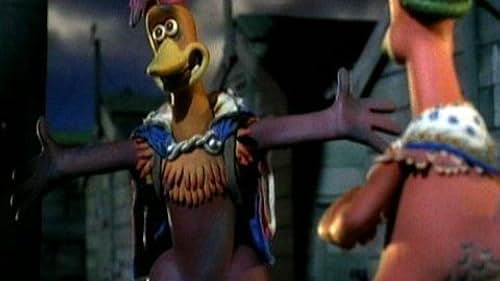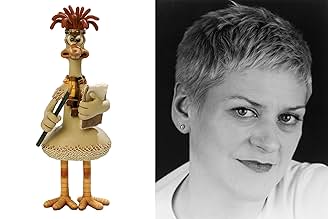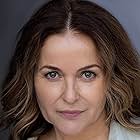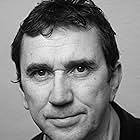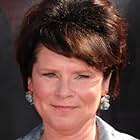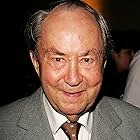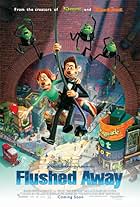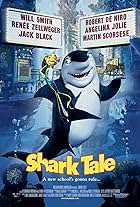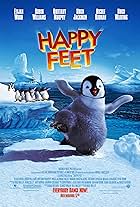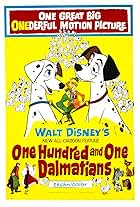When a cockerel apparently flies into a chicken farm, the chickens see him as an opportunity to escape their evil owners.When a cockerel apparently flies into a chicken farm, the chickens see him as an opportunity to escape their evil owners.When a cockerel apparently flies into a chicken farm, the chickens see him as an opportunity to escape their evil owners.
- Nominated for 2 BAFTA Awards
- 24 wins & 27 nominations total
Mel Gibson
- Rocky
- (voice)
Julia Sawalha
- Ginger
- (voice)
Phil Daniels
- Fetcher
- (voice)
Lynn Ferguson
- Mac
- (voice)
Tony Haygarth
- Mr. Tweedy
- (voice)
Jane Horrocks
- Babs
- (voice)
Timothy Spall
- Nick
- (voice)
Imelda Staunton
- Bunty
- (voice)
Benjamin Whitrow
- Fowler
- (voice)
Jo Allen
- Additional Chicken
- (uncredited)
Lisa Kay
- Additional Chicken
- (uncredited)
Peter Sallis
- Wallace
- (uncredited)
John Sharian
- Circus Man
- (uncredited)
Wyatt Shears
- Additional Chicken
- (uncredited)
Storyline
Did you know
- TriviaBabs' knitting is real, done with toothpicks as needles.
- GoofsMr. Tweedy's shotgun disappears on the porch in the opening sequence.
- Crazy creditsNear the very end of the credits the conversation about which comes first, the chicken or the egg??, comes up again. The two rodents want to take an egg or a chicken and make a chicken farm to make their own eggs. However, they cannot decide if they need a chicken or an egg. Finally, Rocky the Rooster pipes in and says to "please pipe down".
- Alternate versionsOriginally, when Mrs. Tweedy was cutting off Edwina's head, the shadow on the wall actually depicted the axe coming downward before cutting away. It was further moved back to the current theatrical version where you see the axe going up, but not coming down.
- ConnectionsEdited into The History of the Hands (2016)
- SoundtracksAve Maria
Written by Franz Schubert (uncredited)
Performed by Gracie Fields
Courtesy of Living Era (ASV Ltd)
Featured review
The great animation director Chuck Jones has often stated that his cartoons "weren't made for children. Neither were they made for adults. They were made for me." Jones's seven-minute shorts were made on a far lower budget than the animated features of today. With features, much more money is at stake, as well as the livelihoods of more people. Because of the pressure to make back the investment, animated features can give an impression of being created by committee, as though tailored to fit some committee's idea of a prefabricated audience segment. It's remarkable, then, that Aardman Animation's "Chicken Run" shows off so much personality, the mark of a film made not for an imagined mass audience, but because it satisfied some need for the filmmakers-besides the need to put food on the table, that is.
The story revolves around an English egg farm designed a lot like a WWII-era prison camp, with overtones of the Nazi concentration camps as well, in that chickens that don't produce end up as dinner. While most of the chickens are resigned to their fate, one plucky hen named Ginger keeps leading escape attempts and keeps getting locked in "solitary" for her pains. Her task takes on new urgency when the Tweedys (the couple who run the farm) prepare to convert their operation into a chicken-pie factory. Hope arrives in the form of an American known (amusingly, in view of the recent "Rocky & Bullwinkle" film) as "Rocky the Flying Rooster", whom Ginger thinks can teach the chickens how to fly. Naturally, Rocky isn't really what he seems to be, and the revelation of his secret threatens to dash all hope of escape, because everyone knows chickens can't fly-or can they?
Unlike most cartoon films, "Chicken Run" is animated using clay figures in stop-motion. While this process involves much more labor than drawn animation, it also makes easier the use of many of the tools of live-action filmmaking, such as dramatic lighting and moving camera work. Directors Peter Lord and Nick Park both have considerable experience in this field, Park with "Creature Comforts" and the "Wallace & Gromit" series (perhaps the most popular animated shorts of the 1990's) and Lord as a co-founder (with David Sproxton) of Aardman and director of such shorts as "Adam", "Wat's Pig", and "Early Bird".
The look of "Chicken Run" displays a harmonious blending of Park's and Lord's strengths; the character designs have the cartoony look of Park's work, while the more realistic settings and backdrops (which appear subject to grime and weathering) are typical of those in Lord's films. All the major characters are distinctive and believable on their own terms; even the numerous chickens have their own distinct looks and voices. The only times the illusion of believability fails are when a clay chicken collides with a metal fence; I half expect to see the clay figure sliced up on the way through. (This may be a personal reaction, conditioned by years of exposure to "Tom & Jerry" and "Roadrunner/Coyote" cartoons.) The story moves efficiently and contains much humor and detail that reward close attention, as well as bravura set-pieces such as Rocky and Ginger's dramatic encounter with the Tweedys' pie machine.
While it has justifiably been compared with military prison-camp escape movies such as "Stalag 17" and "The Great Escape", as well as with the revisionist farm-animal melodrama "Babe", the movie "Chicken Run" resembles most is Pixar's computer-animated "A Bug's Life". The resemblence lies partly in certain details of plot (such as the hero[es] who isn't/aren't what he/they seem to be) but mostly in the nature of the story itself. While human prisoners have a life before prison upon which to look back upon, the chickens in this movie have never known such freedom. Thus, when Ginger talks of escape, she not only urges them to change their location but their entire way of thinking. In chicken terms, this is a radical message, the same one put forth by all the great human radical organizers: that those who are exploited have a right to expect a better life. Though the species and the methods of exploitation are different, "A Bug's Life" shares this revolutionary message (with Flik playing the radical visionary part). Both movies also stress the importance of banding together against oppressors whose power turns out to be more apparent than real.
While one could quibble about such commonalities, I'm impressed that two such films exist at all, that they were funded by major Hollywood studios (Disney for "A Bug's Life", Dreamworks for "Chicken Run"), and that kids love them and parents don't mind watching them more than once. One wonders if the parents know exactly what it is they're watching, and letting their kids watch. Then again, maybe they, too, believe they and their children deserve better lives, and enjoy seeing fellow victims of exploitation get such a life in the end.
The story revolves around an English egg farm designed a lot like a WWII-era prison camp, with overtones of the Nazi concentration camps as well, in that chickens that don't produce end up as dinner. While most of the chickens are resigned to their fate, one plucky hen named Ginger keeps leading escape attempts and keeps getting locked in "solitary" for her pains. Her task takes on new urgency when the Tweedys (the couple who run the farm) prepare to convert their operation into a chicken-pie factory. Hope arrives in the form of an American known (amusingly, in view of the recent "Rocky & Bullwinkle" film) as "Rocky the Flying Rooster", whom Ginger thinks can teach the chickens how to fly. Naturally, Rocky isn't really what he seems to be, and the revelation of his secret threatens to dash all hope of escape, because everyone knows chickens can't fly-or can they?
Unlike most cartoon films, "Chicken Run" is animated using clay figures in stop-motion. While this process involves much more labor than drawn animation, it also makes easier the use of many of the tools of live-action filmmaking, such as dramatic lighting and moving camera work. Directors Peter Lord and Nick Park both have considerable experience in this field, Park with "Creature Comforts" and the "Wallace & Gromit" series (perhaps the most popular animated shorts of the 1990's) and Lord as a co-founder (with David Sproxton) of Aardman and director of such shorts as "Adam", "Wat's Pig", and "Early Bird".
The look of "Chicken Run" displays a harmonious blending of Park's and Lord's strengths; the character designs have the cartoony look of Park's work, while the more realistic settings and backdrops (which appear subject to grime and weathering) are typical of those in Lord's films. All the major characters are distinctive and believable on their own terms; even the numerous chickens have their own distinct looks and voices. The only times the illusion of believability fails are when a clay chicken collides with a metal fence; I half expect to see the clay figure sliced up on the way through. (This may be a personal reaction, conditioned by years of exposure to "Tom & Jerry" and "Roadrunner/Coyote" cartoons.) The story moves efficiently and contains much humor and detail that reward close attention, as well as bravura set-pieces such as Rocky and Ginger's dramatic encounter with the Tweedys' pie machine.
While it has justifiably been compared with military prison-camp escape movies such as "Stalag 17" and "The Great Escape", as well as with the revisionist farm-animal melodrama "Babe", the movie "Chicken Run" resembles most is Pixar's computer-animated "A Bug's Life". The resemblence lies partly in certain details of plot (such as the hero[es] who isn't/aren't what he/they seem to be) but mostly in the nature of the story itself. While human prisoners have a life before prison upon which to look back upon, the chickens in this movie have never known such freedom. Thus, when Ginger talks of escape, she not only urges them to change their location but their entire way of thinking. In chicken terms, this is a radical message, the same one put forth by all the great human radical organizers: that those who are exploited have a right to expect a better life. Though the species and the methods of exploitation are different, "A Bug's Life" shares this revolutionary message (with Flik playing the radical visionary part). Both movies also stress the importance of banding together against oppressors whose power turns out to be more apparent than real.
While one could quibble about such commonalities, I'm impressed that two such films exist at all, that they were funded by major Hollywood studios (Disney for "A Bug's Life", Dreamworks for "Chicken Run"), and that kids love them and parents don't mind watching them more than once. One wonders if the parents know exactly what it is they're watching, and letting their kids watch. Then again, maybe they, too, believe they and their children deserve better lives, and enjoy seeing fellow victims of exploitation get such a life in the end.
- How long is Chicken Run?Powered by Alexa
Details
- Release date
- Countries of origin
- Official sites
- Language
- Also known as
- Pollitos en fuga
- Filming locations
- Bristol, England, UK(Aardman Studios)
- Production companies
- See more company credits at IMDbPro
Box office
- Budget
- $45,000,000 (estimated)
- Gross US & Canada
- $106,834,564
- Opening weekend US & Canada
- $17,506,162
- Jun 25, 2000
- Gross worldwide
- $224,888,359
- Runtime1 hour 24 minutes
- Sound mix
Contribute to this page
Suggest an edit or add missing content

